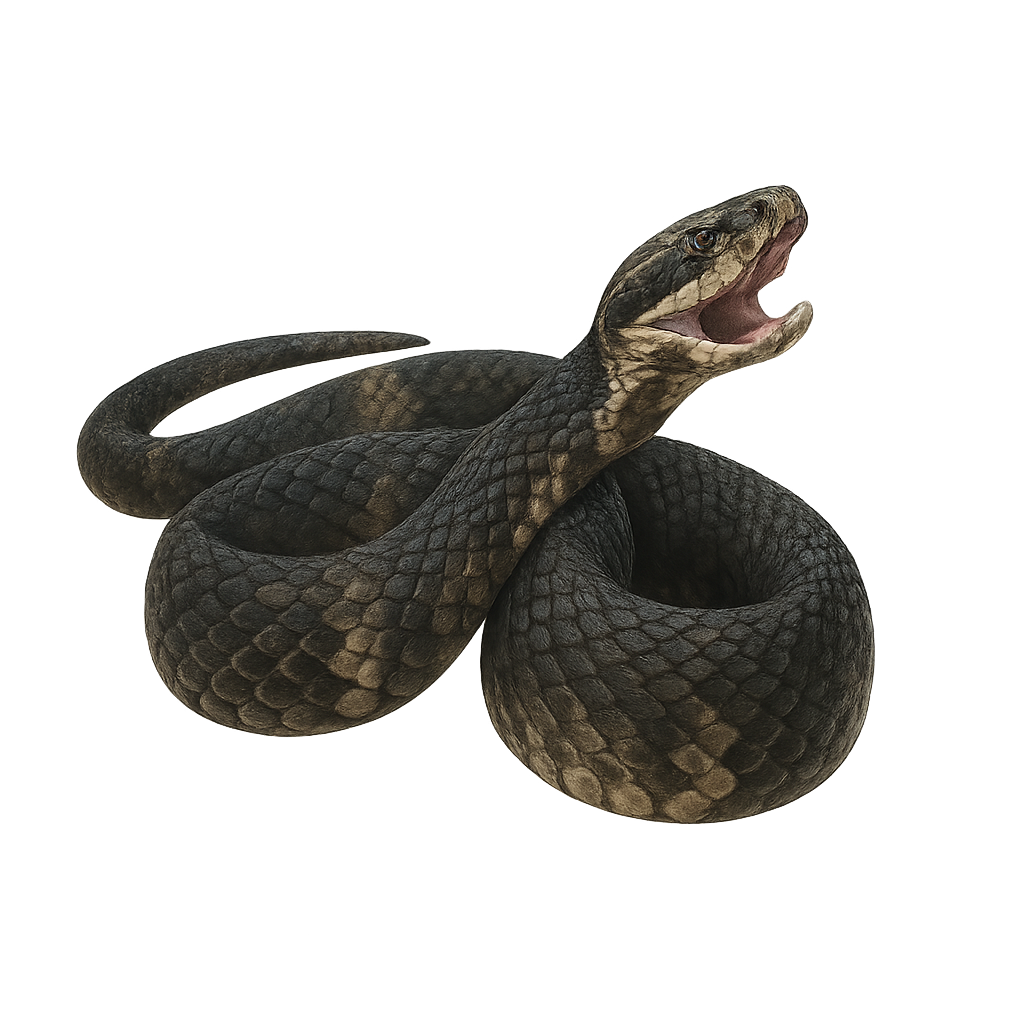Your wildlife photography guide.
Explore the cottonmouth in detail, study its behavior, prepare your shots.
Where to observe and photograph the cottonmouth in the wild
Learn where and when to spot the cottonmouth in the wild, how to identify the species based on distinctive features, and what natural environments it inhabits. The WildlifePhotographer app offers tailored photography tips that reflect the cottonmouth’s behavior, helping you capture better wildlife images. Explore the full species profile for key information including description, habitat, active periods, and approach techniques.
Cottonmouth
Scientific name: Agkistrodon piscivorus

IUCN Status: Least Concern
Family: VIPERIDAE
Group: Reptiles
Sensitivity to human approach: Suspicious
Minimum approach distance: 5 m
Reproduction period: May to June
Incubation: 5–6 mois
Births: May to June
Habitat:
Swamps, rivers, lakes
Activity period :
Mainly active at night, generally discreet during the day.
Identification and description:
The Cottonmouth, or Agkistrodon piscivorus, is a venomous semi-aquatic snake found primarily in the southeastern United States. It is recognizable by its triangular head and coloration that ranges from brown to black, often with lighter crossbands. This snake is well adapted to aquatic environments such as swamps, rivers, and lakes, but can also be found on land. It is known for its defensive behavior, widely opening its mouth to show the white interior, hence the name "cottonmouth". Although venomous, it generally only attacks if it feels threatened. Its bite can be dangerous to humans, requiring immediate medical attention.
Recommended lens:
400 mm – adjust based on distance, desired framing (portrait or habitat), and approach conditions.
Photography tips:
To photograph the Cottonmouth, it is advisable to use a telephoto lens of at least 400mm to capture detailed images from a safe distance. Avoid getting too close, as this snake may feel threatened and exhibit defensive behavior. Focus on times of day when it is active, such as morning or afternoon, to benefit from good natural light. Pay attention to its natural environment, such as swamps or riverbanks, to obtain authentic shots.
The WildlifePhotographer App is coming soon!
Be the first to explore the best nature spots, track rutting seasons, log your observations, and observe more wildlife.
Already 1 439 wildlife lovers subscribed worldwide

